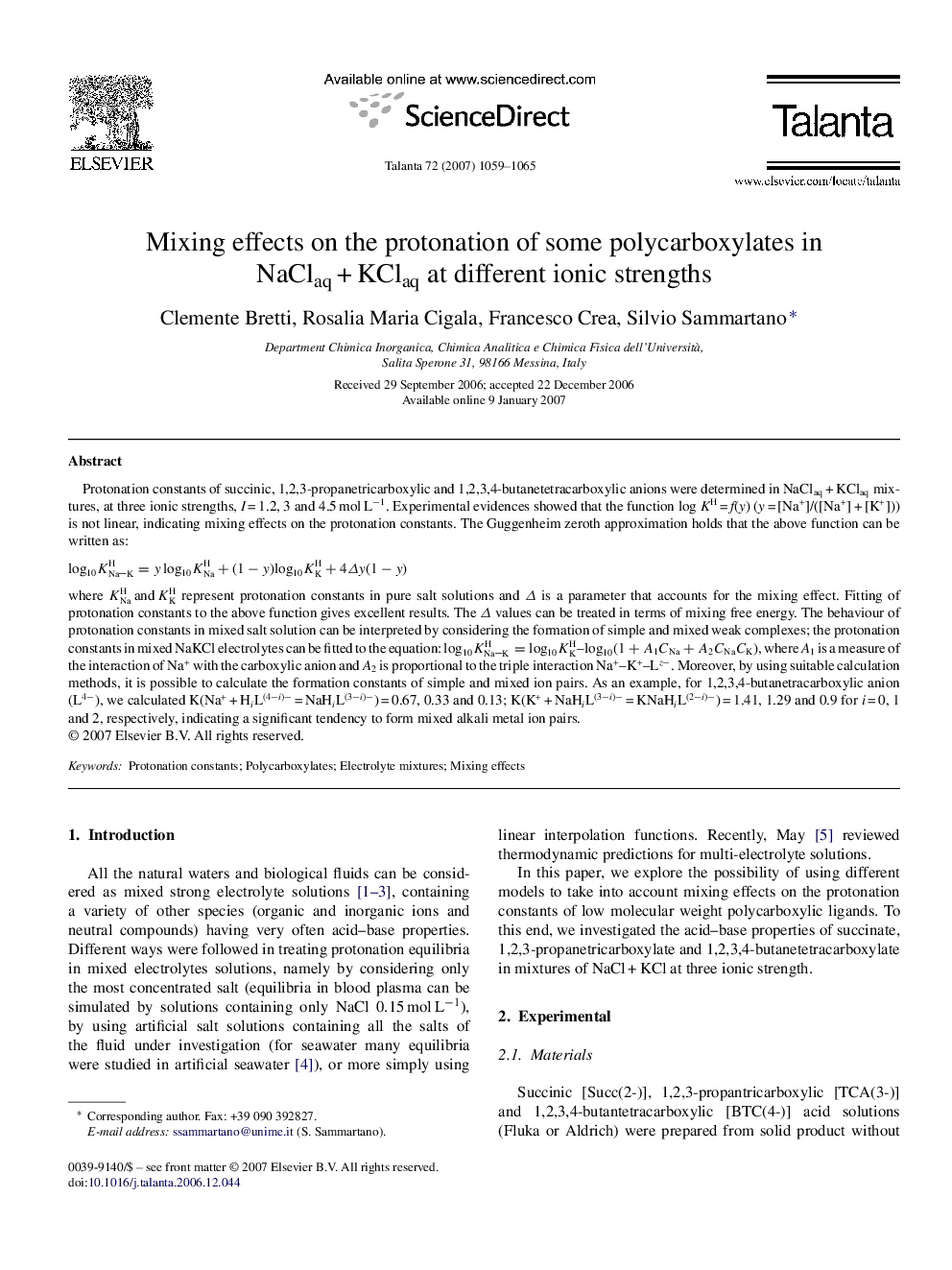| Article ID | Journal | Published Year | Pages | File Type |
|---|---|---|---|---|
| 1244999 | Talanta | 2007 | 7 Pages |
Abstract
Protonation constants of succinic, 1,2,3-propanetricarboxylic and 1,2,3,4-butanetetracarboxylic anions were determined in NaClaq + KClaq mixtures, at three ionic strengths, I = 1.2, 3 and 4.5 mol Lâ1. Experimental evidences showed that the function log KH = f(y) (y = [Na+]/([Na+] + [K+])) is not linear, indicating mixing effects on the protonation constants. The Guggenheim zeroth approximation holds that the above function can be written as:log10â¡KNa-KH=ylog10â¡KNaH+(1ây)log10â¡KKH+4Îy(1ây)where KNaHandKKH represent protonation constants in pure salt solutions and Î is a parameter that accounts for the mixing effect. Fitting of protonation constants to the above function gives excellent results. The Î values can be treated in terms of mixing free energy. The behaviour of protonation constants in mixed salt solution can be interpreted by considering the formation of simple and mixed weak complexes; the protonation constants in mixed NaKCl electrolytes can be fitted to the equation: log10â¡KNa-KH=log10â¡KKH-log10(1+A1CNa+A2CNaCK), where A1 is a measure of the interaction of Na+ with the carboxylic anion and A2 is proportional to the triple interaction Na+-K+-Lzâ. Moreover, by using suitable calculation methods, it is possible to calculate the formation constants of simple and mixed ion pairs. As an example, for 1,2,3,4-butanetracarboxylic anion (L4â), we calculated K(Na+ + HiL(4âi)â = NaHiL(3âi)â) = 0.67, 0.33 and 0.13; K(K+ + NaHiL(3âi)â = KNaHiL(2âi)â) = 1.41, 1.29 and 0.9 for i = 0, 1 and 2, respectively, indicating a significant tendency to form mixed alkali metal ion pairs.
Related Topics
Physical Sciences and Engineering
Chemistry
Analytical Chemistry
Authors
Clemente Bretti, Rosalia Maria Cigala, Francesco Crea, Silvio Sammartano,
